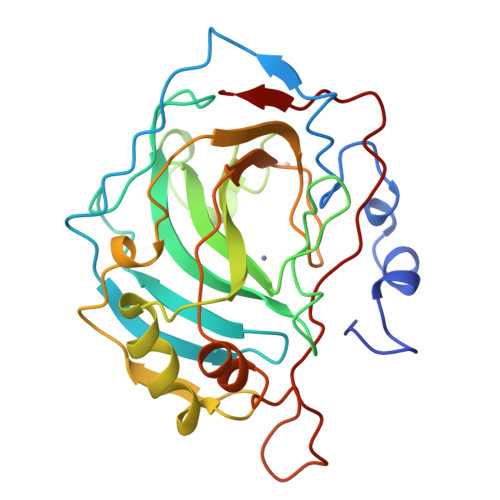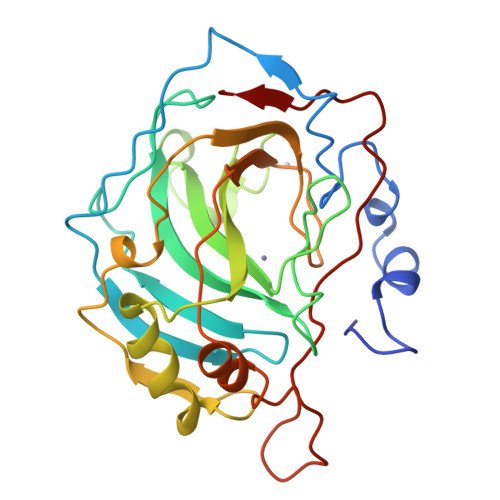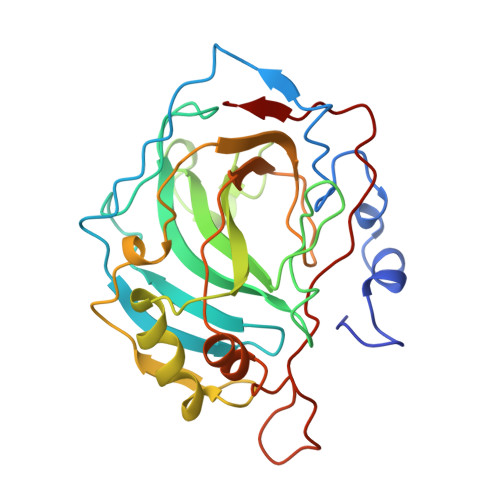Engineering the hydrophobic pocket of carbonic anhydrase II.
Alexander, R.S., Nair, S.K., Christianson, D.W.(1991) Biochemistry 30: 11064-11072
- PubMed: 1932029
- DOI: https://doi.org/10.1021/bi00110a008
- Primary Citation of Related Structures:
4CA2, 6CA2, 7CA2, 8CA2, 9CA2 - PubMed Abstract:
Wild-type and mutant human carbonic anhydrases II, where mutations have been made in the hydrophobic pocket of the active site, have been studied by X-ray crystallographic methods. Specifically, mutations at Val-143 (the base of the pocket) lead to significant changes in catalytic activity and protein structure. The obliteration of a well-defined pocket in the Val-143----Phe and Val-143----Tyr mutants results in significantly diminished enzyme activity [(5 x 10(4))-fold and (3 x 10(5))-fold, respectively]; however, the activity of the Val-143----His mutant is diminished less (10(2)-fold), and deepening the pocket in the Val-143----Gly mutant results in only a 2-fold decrease in activity [Fierke et al., 1991 (preceding paper in this issue)]. These results indicate that the hydrophobic pocket is important for substrate association with the enzyme, but there are probably several catalytically acceptable substrate trajectories through this region of the enzyme structure. Additionally, each mutant protein exhibits long-range (ca. 10-15 A) compensatory structural changes which accommodate the Val-143 substitution. As such, the genetic-structural approach represented in this work serves as a three-dimensional paradigm for the redesign of specificity pockets in other protein catalysts.
Organizational Affiliation:
Department of Chemistry, University of Pennsylvania, Philadelphia 19104-6323.


















